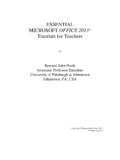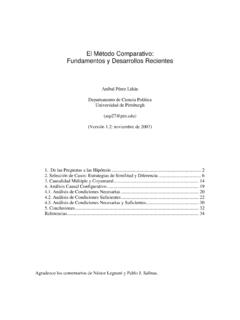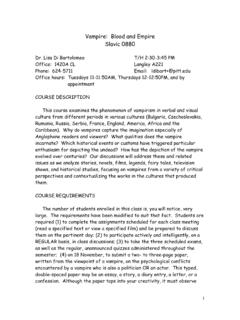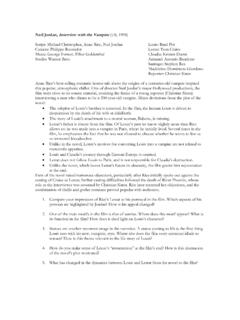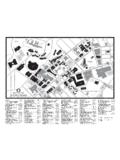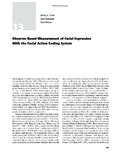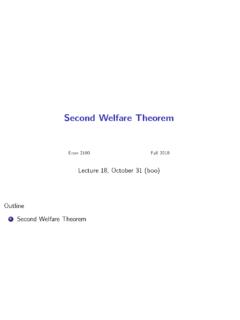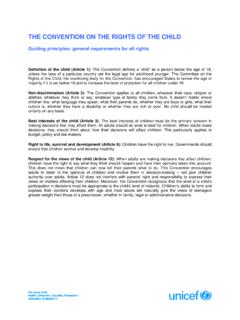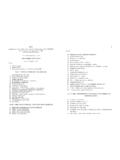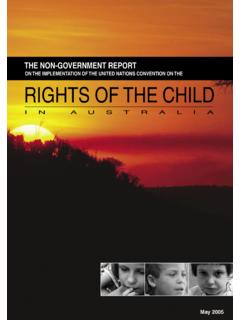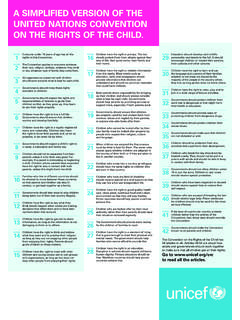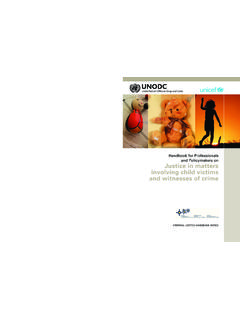Transcription of Project Proposal on Child-Friendly Education
1 Project ProposalonChild- friendly EducationAn Education Project on the CRCUNICEF, BeirutMarch 1997 Funding ProposalforCHILD- friendly EDUCATIONAn Education Project on the CRCR ationaleThe understanding and practice of children s rights is an important element in thepreparation of all young people for living in a democratic society that values diversityand is committed to equality and social justice. Such understanding and practice aredeveloped at an early age in learning the basic facts about rights and through acquiringthe needed skills to translate this information into action; skills such as decisionmaking, value clarification, and negotiations.
2 Such learning is reinforced through thevery nature of the surrounding environment itself. An appropriate climate is an essentialcomplement to effective learning about and through rights, where it is not only enoughto focus upon knowledge, and information gathering about rights, but where it is just asimportant, that children are given the opportunity to develop and practice skillsnecessary for the defense and promotion of their own and other people s rights. Itfollows that children s rights are best learned in a democratic setting whereparticipation is encouraged, where views can be expressed openly and discussed, andwhere there is fairness and justice.
3 Schools in principle provide a structured learningenvironment for many children particularly at primary levels, and offer a goodopportunity to focus on changing knowledge, skills and attitudes of children. They area cost-effective way of reaching children while securing wide coverage andsustainability through the already available infrastructure of the Education sector constitute a resource in the community by having an impact on the habits of itsmembers, where children can play the role of change agents within their families andcommunities in relation to rights and can become good partners for Lebanon, democratic values such as respect for the dignity and freedom of theindividual, responsibility, tolerance.
4 Equality of opportunity and justice need reaffirmingin a country that has witnessed long years of war. These violent years have causedconfusion in the minds of the Lebanese people whether old or young and haveshattered their sense of value judgement and principles. Now, with the resumption ofpeace and tranquility, Lebanon is taking positive steps towards improvements andreconstruction efforts toward rebuilding are advancing swiftly. Yet, Lebanon is facingthe challenge of human development in a peaceful climate. Among its tasks is preparingits present diverse and young generation to function effectively and productively indeveloping their future whether nationally, regionally or is a small country of 10452 km2 overlooking the Mediterranean.
5 It has apopulation of around 3 million and a child population of around one million between 0-15 years. Emerging out of 16 years of civil war that has destroyed its economy and itsinfrastructure, Lebanon has embarked on a process of healing and reconstruction inwhich the Government, the private sector, non-governmental organizations (NGOs) andindividuals are all playing a part. Basic indicators such as the infant mortality rate andprimary school enrolment, which worsened considerably during the war, have comeback to pre-war levels. Despite a tangible revival of the national economy in Lebanonrelative to the situation during the war, the sequels of this civil war are, unfortunately,still perceptible and the costs of living are on the rise.
6 Twenty-eight percent of families,in fact, live under the poverty line, and 75 percent of these are found in the rural peri-urban areas. Moreover, some 450,000 people are still displaced living under hardconditions being deprived of most of their basic needs. In the Education sector, enrolment rates at the primary levels are high close to 96%. Yetquite a number who begin school never finish; drop-out rate at the end of the 9th gradeis 35%. Compulsory Education is not enforced in Lebanon. There are progressiveefforts done towards achieving this, but these are still scheduled for rates according to UNESCO 1995 are for males and for in certain areas tend to drop during the long seasons of cultivation andplantation when children help their families working on the has a good infrastructure of schools reaching almost 2500 schools.
7 With astudent population close to 800000- and a teaching force of around 70000- one percent of the student body are enrolled in the public sector which caters forthe very poor of Lebanon and does not charge tuition fees. The public sector providesits services through around 1400 schools where in some cases access to clean waterand adequate sanitary facilities is still a luxury and where pollution and the degradingenvironmental conditions do affect the children s well being. The curriculum istheoretical and often not related to the children capabilities.
8 Teaching methods are old,rigid and conventional. Repetition rate is , over-age rate is and studentsrote learn facts which have little meaning for them and their daily lives or their punishment is common and rulers are used to administer discipline with littlerespect for the human dignity of the child . Children are not encouraged to express theiropinions or to nurture their talents and parents seldom participate in any kind of schoolactivities. These facts reflect that Education in Lebanon does not comply with majorprovisions of the CRC; that Education may alienate children from the learning process,excludes their parents, and teachers become sources of mental frustration instead offacilitators.
9 In other words, Education in Lebanon is not in LebanonOn 30 September 1990, the Prime Minister signed the declaration on the survival,protection and development of children and the relevant Plan of Action on the occasionof the World Summit for Children. These two documents constituted tangibleendorsements of the Convention on the Rights of the child which had been adopted bythe General Assembly of the United Nations ten months earlier. The said Conventionwas ratified by the Lebanese Parliament on 18 October, 1990 and became an integral partof the Lebanese legislation on the 30th of that month when it was signed and publishedby the President of the countries that ratify the Convention agree to be legally bound to its provisionsand report regularly to a Committee of experts on the Rights of the child ( ROC ) as tosteps taken to comply with its provisions.
10 In this direction, sustained efforts weredeployed to keep up the momentum following by ratification of the Convention, and asa result, two important groups were formed, consisting of: (a) a Parliamentary Committee for the Rights of the child , and (b) a Forum of National NGOs for the Rights of the child . Also, the Ministry of Social Affairs formed the Higher Council for Childhood, whichcomprises all ministries in the social sector, NGOs, and unicef . The Council hassubmitted a report on implementation of the CRC to the Human Rights Center inGeneva.
